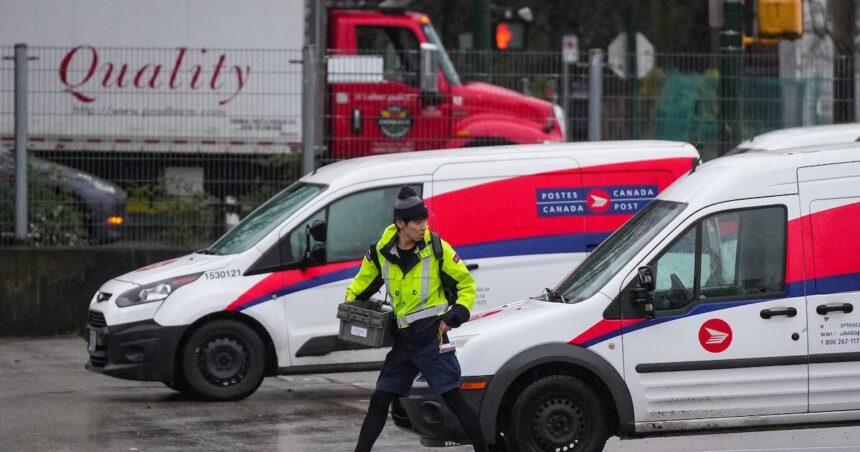As Parliament Hill braces for a crucial vote on postal reforms next week, everyday Canadians find themselves increasingly concerned about what Canada Post’s operational future might look like during next year’s federal election.
The timing couldn’t be more problematic. With election preparations slated to begin just months from now, recent service disruptions have raised serious questions about the Crown corporation’s readiness to handle the surge of voter information cards, mail-in ballots, and campaign materials that typically flow through the system during election periods.
“We’re looking at a perfect storm of circumstances,” says Elizabeth Warren, former Elections Canada regional director for Ontario. “The postal service has always been the backbone of our election infrastructure. When it falters, our democratic processes become vulnerable.”
Last month’s three-day service interruption in Manitoba and parts of Saskatchewan—blamed on outdated sorting equipment—offered a troubling preview of what might happen during a nationwide election. Over 350,000 pieces of mail were delayed, including government correspondence and medical test results.
The upcoming parliamentary vote centers on Bill C-87, which would allocate $1.2 billion for Canada Post modernization but also introduce controversial measures that unions claim could reduce workforce by up to 15 percent through early retirement incentives and automation.
“Canadians don’t realize how much they rely on us until service is compromised,” says Jean Levesque, a postal worker from Trois-Rivières who’s spent 22 years with Canada Post. “During elections, we handle millions of additional pieces. If we’re short-staffed or using unreliable equipment, voters will feel the impact directly.”
In Moncton, small business owner Tracy Nguyen has already experienced the downstream effects of postal uncertainties. “I mail sample ballots and voter information packages for several municipal candidates,” she explains while organizing stacks of campaign materials in her print shop. “Last month’s delays cost me nearly $3,000 in reprinting when time-sensitive materials didn’t arrive before a candidate debate.”
Elections Canada reports that approximately 18% of Canadian voters—over 4.5 million people—received voter information through mail-only channels during the last federal election. For seniors and rural communities, postal delivery remains essential rather than optional.
The controversy has taken on partisan dimensions as well. Conservative critics argue the Liberal government has neglected Canada Post modernization, pointing to a 28% increase in service complaints since 2019. Meanwhile, NDP representatives have voiced concerns that proposed reforms prioritize cost-cutting over service quality.
“We’ve been warning about this for years,” says Mark Thompson, spokesperson for the Canadian Union of Postal Workers. “You can’t simultaneously reduce the workforce, delay equipment upgrades, and expect the system to handle the additional strain of a federal election.”
In Yellowknife, territorial election official Sarah Denton worries about remote communities. “In many northern communities, there is no alternative to Canada Post. If mail service fails during an election period, those voters effectively become disenfranchised,” she tells me during a phone interview while preparing for a local by-election.
The stakes extend beyond basic mail delivery. Elections Canada relies on Canada Post for what it calls “democracy mail”—the special handling procedures for electoral materials that ensure ballots remain confidential and secure. These procedures require trained personnel familiar with election protocols.
Recent polling suggests Canadians are paying attention. A Leger survey conducted last month found that 63% of respondents expressed concern about postal reliability during the upcoming election cycle, with that number jumping to 78% among rural residents.
In Peggy’s Cove, Nova Scotia, retiree William MacDonald has voted by mail in the last three federal elections. “At my age, getting to a polling station isn’t always easy,” he explains while reviewing his most recent phone bill—which arrived ten days late. “If I can’t trust that my ballot will arrive on time, I might lose my voice in our democracy.”
The federal government maintains that contingency plans exist. A spokesperson for the Ministry of Public Services and Procurement told Mediawall.news that “multiple delivery options” are being explored to ensure election materials reach Canadians regardless of postal service status.
However, Elections Canada’s own internal documents—obtained through Access to Information requests—paint a more concerning picture. A February assessment noted “significant vulnerabilities” in distribution channels and recommended “immediate action” to secure alternative delivery methods for critical electoral materials.
For Canada Post workers themselves, the situation feels increasingly precarious. “We take pride in handling election materials properly,” says Winnipeg letter carrier Darren Wong. “But morale is at an all-time low. People are leaving faster than we can train replacements, and that institutional knowledge matters during something as critical as an election.”
The upcoming parliamentary vote may determine whether Canada Post receives the resources needed to address these concerns before election preparations begin in earnest. With polls suggesting another minority government situation likely in 2025, the reliability of our postal infrastructure could prove more consequential than many Canadians realize.
As Warren, the former Elections Canada official, puts it: “Mail delivery isn’t just about convenience—it’s about ensuring every eligible voter has equal access to our democratic process. That’s something worth investing in.”






